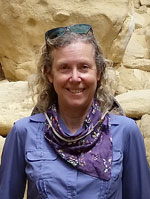PRESIDENT’S COLUMN
Toddlers and Tears on the Texas Border
By Sheryl Luzzadder-Beach
 This column begins with special thanks and recognition of our outgoing President Dr. Derek Alderman, and outgoing Past President Dr. Glen MacDonald. Please join me in recognizing their leadership in moving the association forward on so many important fronts, ranging from civil rights to environmental security. We must carry this momentum forward from the strong foundations they established, and I am honored to take up the baton as your new AAG president… In my first presidential column, I address a matter of human rights and global understanding, to which geographers have much to contribute.
This column begins with special thanks and recognition of our outgoing President Dr. Derek Alderman, and outgoing Past President Dr. Glen MacDonald. Please join me in recognizing their leadership in moving the association forward on so many important fronts, ranging from civil rights to environmental security. We must carry this momentum forward from the strong foundations they established, and I am honored to take up the baton as your new AAG president… In my first presidential column, I address a matter of human rights and global understanding, to which geographers have much to contribute.
Continue Reading.
ANNUAL MEETING
Registration Opening Soon for #aagDC
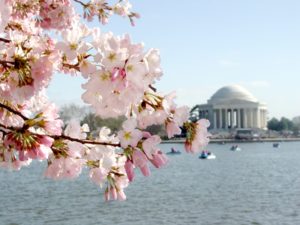 The 2019 AAG Annual Meeting takes place from April 3-7, 2019. Participants and attendees can start to register for the meeting at the end of July. Please check your email in the coming days for an important announcement regarding the 2019 Annual Meeting fee structure. And remember, register early for the best rates!
The 2019 AAG Annual Meeting takes place from April 3-7, 2019. Participants and attendees can start to register for the meeting at the end of July. Please check your email in the coming days for an important announcement regarding the 2019 Annual Meeting fee structure. And remember, register early for the best rates!
Learn more about the 2019 Annual Meeting.
Annual Meeting Hotel Discount Rates Now Available
 The official #aagDC conference hotels are now open for reservations. As you prepare to travel to Washington, DC, explore the Marriott Wardman Park and the Omni Shoreham – the co-headquarters for the 2019 AAG Annual Meeting. The Marriott and Omni are conveniently located directly across the street from each other in DC’s Woodley Park neighborhood. #aagDC will overlap with DC’s renowned Cherry Blossom Festival, which attracts more than a million tourists each year. Because of this, AAG has reserved a block of discounted rooms for Annual Meeting attendees.
The official #aagDC conference hotels are now open for reservations. As you prepare to travel to Washington, DC, explore the Marriott Wardman Park and the Omni Shoreham – the co-headquarters for the 2019 AAG Annual Meeting. The Marriott and Omni are conveniently located directly across the street from each other in DC’s Woodley Park neighborhood. #aagDC will overlap with DC’s renowned Cherry Blossom Festival, which attracts more than a million tourists each year. Because of this, AAG has reserved a block of discounted rooms for Annual Meeting attendees.
Lock in your rate.

“Focus on Washington, DC and the Mid Atlantic” is an ongoing series curated by the Local Arrangements Committee to provide insight on and understanding of the geographies of Washington, DC and the greater Mid Atlantic region in preparation for the 2019 AAG Annual Meeting.
American Indians of Washington, D.C., and the Chesapeake
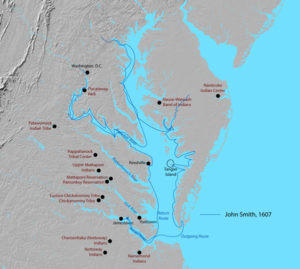
Become familiar with the Washington, DC and Mid Atlantic region of the US before you visit for the 2019 AAG Annual Meeting with monthly articles in “Focus on Washington, DC and the Mid Atlantic.” This month, hear from Doug Herman, senior geographer at the National Museum of the American Indian. Herman reflects on the cultures indigenous to the geographic area surrounding the Chesapeake and explains the political policies that have shaped their historical and contemporary geographies.
Read more.
ASSOCIATION NEWS
Meet the Editors of AAG Journals: David Butler and Nik Heynen
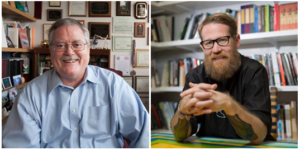
Published six times a year since 1911, the Annals of the American Association of Geographers is one of the world’s foremost geography journals. The articles in the journal are divided into four theme sections that reflect the various scholarship throughout the geographic discipline: Geographic Methods; Human Geography; Nature and Society; and Physical Geography, Earth and Environmental Sciences. There are editors responsible for each of the four themes. This month, meet two of the Annals editors – David Butler and Nik Heynen.
Find out more about the AAG Journals editors.
AAG Welcomes Three Summer Interns
 The AAG is pleased to have three interns join the AAG staff this summer. Alex Lafler, a junior at Michigan State University, is pursuing a BS in Geographic Information Science and a BA in Human Geography (along with a Minor in Environment and Health), Christian Meoli, a senior at the University of Mary Washington, is double majoring in Geography and Environmental Science with a certificate in GIS, and Jenny Roepe, a senior at Virginia Polytechnic Institute and State University, is pursuing a B.A. in geography with a minor in geographical information systems and urban and public issues.
The AAG is pleased to have three interns join the AAG staff this summer. Alex Lafler, a junior at Michigan State University, is pursuing a BS in Geographic Information Science and a BA in Human Geography (along with a Minor in Environment and Health), Christian Meoli, a senior at the University of Mary Washington, is double majoring in Geography and Environmental Science with a certificate in GIS, and Jenny Roepe, a senior at Virginia Polytechnic Institute and State University, is pursuing a B.A. in geography with a minor in geographical information systems and urban and public issues.
Meet the 2018 summer interns.
RESOURCES & OPPORTUNITIES
Geographers on Film Series Available through Library of Congress
 The AAG is excited to announce that the first 30 of 308 films in the Geographers on Film series have been digitized and are now available online from the Library of Congress. Geographers on Film is a collection of recorded video interviews conducted with hundreds of geographers between August 1970 and the mid-1980s, including scholars who have shaped the discipline such as Carl Sauer, Richard Hartshorne, Wilbur Zelinsky, Richard Chorley, Mildred Berman, Harold Rose, Jan Monk, Yi-Fu Tuan and Rickie Sanders. The late Maynard Weston Dow (1929 – 2011), Professor Emeritus at Plymouth State College, and Nancy Dow largely produced the series over 40 years.
The AAG is excited to announce that the first 30 of 308 films in the Geographers on Film series have been digitized and are now available online from the Library of Congress. Geographers on Film is a collection of recorded video interviews conducted with hundreds of geographers between August 1970 and the mid-1980s, including scholars who have shaped the discipline such as Carl Sauer, Richard Hartshorne, Wilbur Zelinsky, Richard Chorley, Mildred Berman, Harold Rose, Jan Monk, Yi-Fu Tuan and Rickie Sanders. The late Maynard Weston Dow (1929 – 2011), Professor Emeritus at Plymouth State College, and Nancy Dow largely produced the series over 40 years.
View the archive.
Ask a Geographer Program Update: Volunteers Needed

The AAG is currently updating the Ask a Geographer program, an AAG outreach project that offers the media, government agencies, teachers, and students links to experts in various fields of geography. Are you looking for a fun service opportunity to support geography by helping others learn more about it? No matter your career status, consider volunteering for the AAG Ask a Geographer program!
Volunteer to promote geography today.
AAG Seeks Editor for ‘The Professional Geographer’
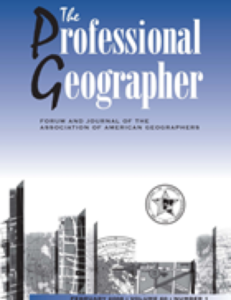 The American Association of Geographers seeks applications for the position of Editor of The Professional Geographer. The new editor, whose responsibilities include overseeing the solicitation, review, and publication of scholarly articles for the journal, will be appointed for a four-year editorial term beginning July 1, 2019.
The American Association of Geographers seeks applications for the position of Editor of The Professional Geographer. The new editor, whose responsibilities include overseeing the solicitation, review, and publication of scholarly articles for the journal, will be appointed for a four-year editorial term beginning July 1, 2019.
Learn more about the editor position.
PUBLICATIONS
Read the July 2018 Issue of the ‘Annals of the AAG’
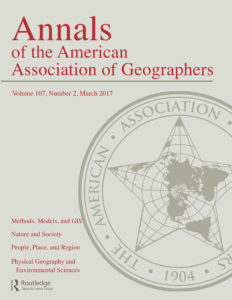
The Annals of the American Association of Geographers is published six times a year. Issue 4 of Volume 108 is now available to read online as part of the AAG membership benefits. This issue features an editors’ choice article on the racial nature of gerrymandering in the US.
Full article listing available.
Volume 4, Issue 1 of ‘GeoHumanities’ Online Now
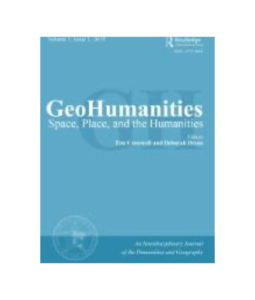 GeoHumanities features articles that span conceptual and methodological debates in geography and the humanities; critical reflections on analog and digital artistic productions; and new scholarly interactions occurring at the intersections of geography and multiple humanities disciplines. There are full length scholarly articles in the Articles section and shorter creative pieces that cross over between the academy and creative practice in the Practices and Curations section.
GeoHumanities features articles that span conceptual and methodological debates in geography and the humanities; critical reflections on analog and digital artistic productions; and new scholarly interactions occurring at the intersections of geography and multiple humanities disciplines. There are full length scholarly articles in the Articles section and shorter creative pieces that cross over between the academy and creative practice in the Practices and Curations section.
View the manuscripts.
New Books in Geography — May 2018 Available

Keep up with the latest publications in geography and related disciplines with the New Books in Geography List, published monthly. The May 2018 list, which features books on topics such as health, geopolitics, environmentalism, and postcolonial analysis, is now available to view.
Browse the list of new books.
May 2018 Issue of the ‘Professional Geographer’ Published

The Professional Geographer, Volume 70, Issue 2, has been published. Of note to geographers interested in the Public Engagement theme for #AAG2018, the focus section in this issue is Out in the World: Geography’s Complex Relationship with Civic Engagement. The issue also includes short articles in academic or applied geography, emphasizing empirical studies and methodologies.
See the newest issue.
Spring 2018 Issue of ‘The AAG Review of Books’ Now Available
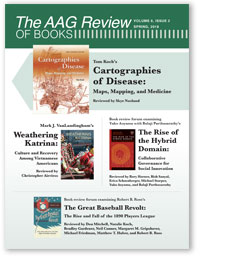 Volume 6, Issue 2 of the quarterly The AAG Review of Books has now been published online. In addition to scholarly reviews of recent books related to geography, public policy and international affairs, this issue features longer book review fora of Refugees in Extended Exile: Living on the Edge, The Rise of the Hybrid Domain: Collaborative Governance for Social Innovation, and The Great Baseball Revolt: The Rise and Fall of the 1890 Players League.
Volume 6, Issue 2 of the quarterly The AAG Review of Books has now been published online. In addition to scholarly reviews of recent books related to geography, public policy and international affairs, this issue features longer book review fora of Refugees in Extended Exile: Living on the Edge, The Rise of the Hybrid Domain: Collaborative Governance for Social Innovation, and The Great Baseball Revolt: The Rise and Fall of the 1890 Players League.
Read the reviews.
OF NOTE
Africa Specialty Group congratulates Dr. Padraig Carmody, recipient of the 2018 Kwadwo Konadu-Agyemang Distinguished African Scholar Award
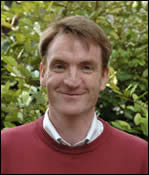
Dr. Carmody teaches Geography at Trinity College, the University of Dublin, where he did his undergraduate and masters work and is a visiting associate professor at the University of Johannesburg. His Ph.D. is from the University of Minnesota in the United States. He also taught briefly at the University of Vermont after his graduation from Minnesota. At TCD, he currently directs the Masters in Development Practice. His research centres on the political economy of globalisation in Africa and he has published in journals such as European Journal of Development Research, Review of African Political Economy, Economic Geography and World Development. He has also published seven books, including The New Scramble for Africa (Polity, 2011), the Rise of the BRICS in Africa (Zed, 2013) and as part of the Royal Geographical Society-Institute of British Geographers’ book series with Professor James T. Murphy, Africa’s Information Revolution: Technical Regimes and Production Networks in South Africa and Tanzania (Wiley-Blackwell, 2015). He has won research grants from the United States National Science Foundation, European Commission and Irish Research Council. His current research examines the impacts of large scale land acquisitions in Africa. He sits on the board of Political Geography and African Geographical Review and is a former editor-in-chief of Geoforum (Elsevier) and is a Fellow of Trinity College. He was elected to the Royal Irish Academy in 2018.
GEOGRAPHERS IN THE NEWS
IN THE NEWS
Popular stories from the AAG SmartBrief
EVENTS CALENDAR
Submit News to the AAG Newsletter. To share your news, email us!
 This column begins with special thanks and recognition of our outgoing President Dr. Derek Alderman, and outgoing Past President Dr. Glen MacDonald. Please join me in recognizing their leadership in moving the association forward on so many important fronts, ranging from civil rights to environmental security. We must carry this momentum forward from the strong foundations they established, and I am honored to take up the baton as your new AAG president… In my first presidential column, I address a matter of human rights and global understanding, to which geographers have much to contribute.
This column begins with special thanks and recognition of our outgoing President Dr. Derek Alderman, and outgoing Past President Dr. Glen MacDonald. Please join me in recognizing their leadership in moving the association forward on so many important fronts, ranging from civil rights to environmental security. We must carry this momentum forward from the strong foundations they established, and I am honored to take up the baton as your new AAG president… In my first presidential column, I address a matter of human rights and global understanding, to which geographers have much to contribute. The official #aagDC conference hotels are now open for reservations. As you prepare to travel to Washington, DC, explore the Marriott Wardman Park and the Omni Shoreham – the co-headquarters for the 2019 AAG Annual Meeting. The Marriott and Omni are conveniently located directly across the street from each other in DC’s Woodley Park neighborhood. #aagDC will overlap with DC’s renowned Cherry Blossom Festival, which attracts more than a million tourists each year. Because of this, AAG has reserved a block of discounted rooms for Annual Meeting attendees.
The official #aagDC conference hotels are now open for reservations. As you prepare to travel to Washington, DC, explore the Marriott Wardman Park and the Omni Shoreham – the co-headquarters for the 2019 AAG Annual Meeting. The Marriott and Omni are conveniently located directly across the street from each other in DC’s Woodley Park neighborhood. #aagDC will overlap with DC’s renowned Cherry Blossom Festival, which attracts more than a million tourists each year. Because of this, AAG has reserved a block of discounted rooms for Annual Meeting attendees.


 The AAG is pleased to have three interns join the AAG staff this summer. Alex Lafler, a junior at Michigan State University, is pursuing a BS in Geographic Information Science and a BA in Human Geography (along with a Minor in Environment and Health), Christian Meoli, a senior at the University of Mary Washington, is double majoring in Geography and Environmental Science with a certificate in GIS, and Jenny Roepe, a senior at Virginia Polytechnic Institute and State University, is pursuing a B.A. in geography with a minor in geographical information systems and urban and public issues.
The AAG is pleased to have three interns join the AAG staff this summer. Alex Lafler, a junior at Michigan State University, is pursuing a BS in Geographic Information Science and a BA in Human Geography (along with a Minor in Environment and Health), Christian Meoli, a senior at the University of Mary Washington, is double majoring in Geography and Environmental Science with a certificate in GIS, and Jenny Roepe, a senior at Virginia Polytechnic Institute and State University, is pursuing a B.A. in geography with a minor in geographical information systems and urban and public issues. The AAG is excited to announce that the first 30 of 308 films in the Geographers on Film series have been digitized and are now available online from the Library of Congress. Geographers on Film is a collection of recorded video interviews conducted with hundreds of geographers between August 1970 and the mid-1980s, including scholars who have shaped the discipline such as Carl Sauer, Richard Hartshorne, Wilbur Zelinsky, Richard Chorley, Mildred Berman, Harold Rose, Jan Monk, Yi-Fu Tuan and Rickie Sanders. The late Maynard Weston Dow (1929 – 2011), Professor Emeritus at Plymouth State College, and Nancy Dow largely produced the series over 40 years.
The AAG is excited to announce that the first 30 of 308 films in the Geographers on Film series have been digitized and are now available online from the Library of Congress. Geographers on Film is a collection of recorded video interviews conducted with hundreds of geographers between August 1970 and the mid-1980s, including scholars who have shaped the discipline such as Carl Sauer, Richard Hartshorne, Wilbur Zelinsky, Richard Chorley, Mildred Berman, Harold Rose, Jan Monk, Yi-Fu Tuan and Rickie Sanders. The late Maynard Weston Dow (1929 – 2011), Professor Emeritus at Plymouth State College, and Nancy Dow largely produced the series over 40 years.


 GeoHumanities features articles that span conceptual and methodological debates in geography and the humanities; critical reflections on analog and digital artistic productions; and new scholarly interactions occurring at the intersections of geography and multiple humanities disciplines. There are full length scholarly articles in the Articles section and shorter creative pieces that cross over between the academy and creative practice in the Practices and Curations section.
GeoHumanities features articles that span conceptual and methodological debates in geography and the humanities; critical reflections on analog and digital artistic productions; and new scholarly interactions occurring at the intersections of geography and multiple humanities disciplines. There are full length scholarly articles in the Articles section and shorter creative pieces that cross over between the academy and creative practice in the Practices and Curations section.

 Volume 6, Issue 2 of the quarterly The AAG Review of Books has now been published online. In addition to scholarly reviews of recent books related to geography, public policy and international affairs, this issue features longer book review fora of Refugees in Extended Exile: Living on the Edge, The Rise of the Hybrid Domain: Collaborative Governance for Social Innovation, and The Great Baseball Revolt: The Rise and Fall of the 1890 Players League.
Volume 6, Issue 2 of the quarterly The AAG Review of Books has now been published online. In addition to scholarly reviews of recent books related to geography, public policy and international affairs, this issue features longer book review fora of Refugees in Extended Exile: Living on the Edge, The Rise of the Hybrid Domain: Collaborative Governance for Social Innovation, and The Great Baseball Revolt: The Rise and Fall of the 1890 Players League.
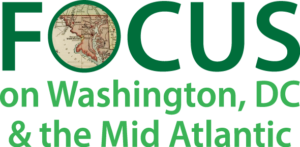 When Captain John Smith sailed up the Potomac River in 1608, he found 13 American Indian villages along its banks. Spanish incursions beginning in 1521 brought diseases, land grabs, resource destruction, military assaults, and slave raids. Nonetheless, there were several large villages and fortified towns by the time of John Smith’s 1608 visit. At that time, three major political groups vied for power in the region: the Susquehannock in Pennsylvania; the Piscataway Chiefdom in southern Maryland; and the Powhatan Chiefdom in Virginia and farther south.
When Captain John Smith sailed up the Potomac River in 1608, he found 13 American Indian villages along its banks. Spanish incursions beginning in 1521 brought diseases, land grabs, resource destruction, military assaults, and slave raids. Nonetheless, there were several large villages and fortified towns by the time of John Smith’s 1608 visit. At that time, three major political groups vied for power in the region: the Susquehannock in Pennsylvania; the Piscataway Chiefdom in southern Maryland; and the Powhatan Chiefdom in Virginia and farther south.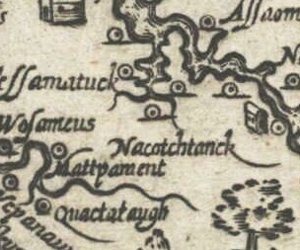
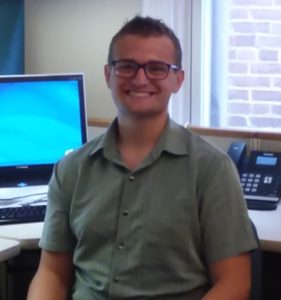 Alex Lafler is a Junior at Michigan State University pursuing a BS in Geographic Information Science and a BA in Human Geography (along with a Minor in Environment and Health). Alex previously interned at the St. Joseph County Land Resource Centre (Centreville, MI). After Graduation, Alex hopes to pursue a career in GIS or a related field. In his spare time, Alex likes to watch movies and sports (Go Green!), walk as much as he can, and create videos and podcasts.
Alex Lafler is a Junior at Michigan State University pursuing a BS in Geographic Information Science and a BA in Human Geography (along with a Minor in Environment and Health). Alex previously interned at the St. Joseph County Land Resource Centre (Centreville, MI). After Graduation, Alex hopes to pursue a career in GIS or a related field. In his spare time, Alex likes to watch movies and sports (Go Green!), walk as much as he can, and create videos and podcasts.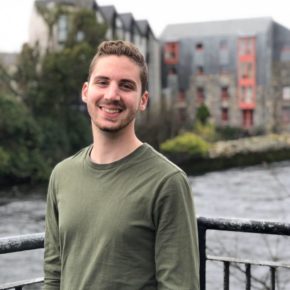 Christian Meoli is a senior at the University of Mary Washington, double majoring in Geography and Environmental Science with a certificate in GIS. He has interned for the town planning departments in his hometown of Maryland and in his college town in Virginia. Most recently he interned for the Sierra Club in Boston where he explored urban environmental geography. He hopes to bring his academic perspective and enthusiasm for geography to the AAG. In his spare time he enjoys traveling, hiking, and playing tennis.
Christian Meoli is a senior at the University of Mary Washington, double majoring in Geography and Environmental Science with a certificate in GIS. He has interned for the town planning departments in his hometown of Maryland and in his college town in Virginia. Most recently he interned for the Sierra Club in Boston where he explored urban environmental geography. He hopes to bring his academic perspective and enthusiasm for geography to the AAG. In his spare time he enjoys traveling, hiking, and playing tennis.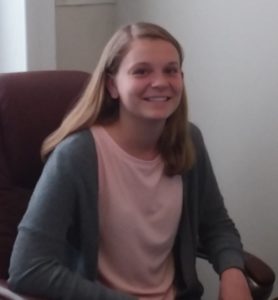 Jenny Roepe is a rising senior at Virginia Polytechnic Institute and State University, pursuing a B.A. in geography with a minor in geographical information systems and urban and public issues. Last summer Jenny interned for the Fairfax County Park Authority Planning and Development Division. During her time at FCPA, she designed trail maps using GIS software. The maps were posted for public use at various parks in Fairfax County. After graduation, Jenny hopes to pursue a career that combines her passion for the environment with her skills and background in Geographical Information Systems. In her spare time, Jenny likes to read, hike and travel to new places.
Jenny Roepe is a rising senior at Virginia Polytechnic Institute and State University, pursuing a B.A. in geography with a minor in geographical information systems and urban and public issues. Last summer Jenny interned for the Fairfax County Park Authority Planning and Development Division. During her time at FCPA, she designed trail maps using GIS software. The maps were posted for public use at various parks in Fairfax County. After graduation, Jenny hopes to pursue a career that combines her passion for the environment with her skills and background in Geographical Information Systems. In her spare time, Jenny likes to read, hike and travel to new places.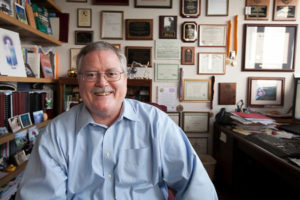 The Physical Geography, Earth and Environmental Sciences section editor of the Annals of the American Association of Geographers is David Butler. Butler is a Texas State University System Regents’ Professor in the Department of Geography at Texas State University where he teaches courses on geomorphology, landscape biogeography, biogeomorphology, and Nature and Philosophy of Geography. With research interests that include geomorphology, biogeography, natural hazards, mountain environments and environmental change, Butler has considerable experience working with physical geography topics. He has also been the recipient of several awards during his career including the Distinguished Career Award from the Biogeography Specialty Group, the Geomorphology Specialty Group, and the Mountain Geography Specialty Group of the AAG as well as a variety of teaching and mentoring awards.
The Physical Geography, Earth and Environmental Sciences section editor of the Annals of the American Association of Geographers is David Butler. Butler is a Texas State University System Regents’ Professor in the Department of Geography at Texas State University where he teaches courses on geomorphology, landscape biogeography, biogeomorphology, and Nature and Philosophy of Geography. With research interests that include geomorphology, biogeography, natural hazards, mountain environments and environmental change, Butler has considerable experience working with physical geography topics. He has also been the recipient of several awards during his career including the Distinguished Career Award from the Biogeography Specialty Group, the Geomorphology Specialty Group, and the Mountain Geography Specialty Group of the AAG as well as a variety of teaching and mentoring awards. Nik Heynen is the Human Geography editor for the Annals of the American Association of Geographers, a Professor in the Department of Geography at the University of Georgia, and an adjunct Professor in the Department of Anthropology. At the University of Georgia, Heynen teaches mostly large introductory classes, in addition to graduate seminars.
Nik Heynen is the Human Geography editor for the Annals of the American Association of Geographers, a Professor in the Department of Geography at the University of Georgia, and an adjunct Professor in the Department of Anthropology. At the University of Georgia, Heynen teaches mostly large introductory classes, in addition to graduate seminars.